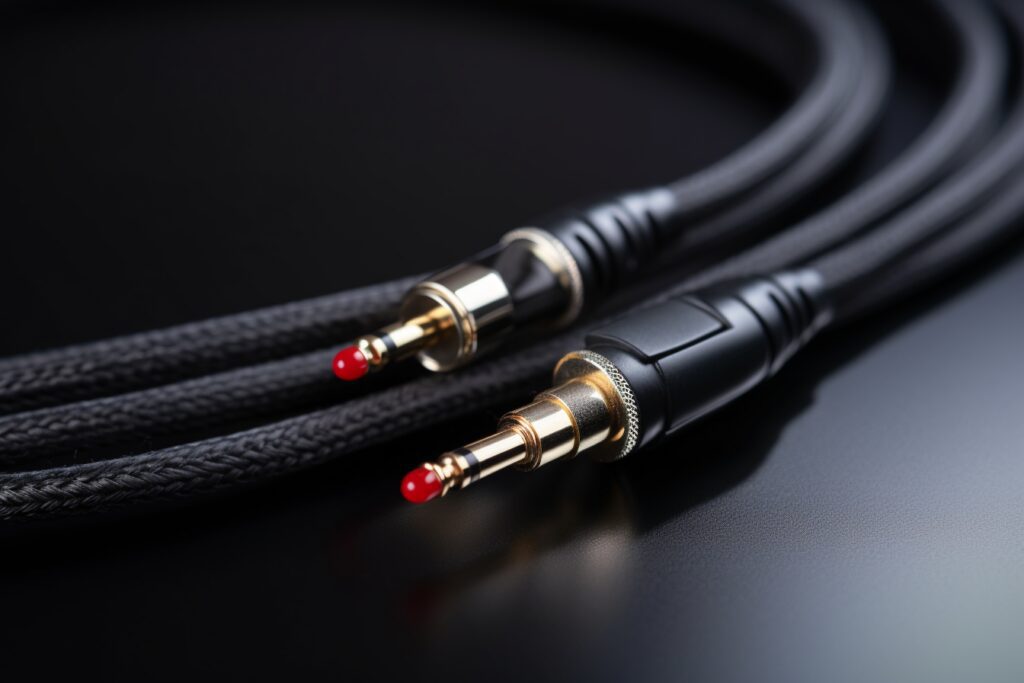Line-in recording is capturing audio signals directly from an external source, such as a musical instrument or a microphone, and recording them onto a digital device. This technique is commonly used in music production, podcasting, and other forms of audio recording where high-quality sound is essential.
Line-in recording is recording sound from an external audio device or instrument using a line-in port on a computer or other recording device. This type of recording captures high-quality sound without the interference of background noise or distortion that can occur when using a microphone to record sound.
Line-in recording provides several advantages over other recording methods, such as microphone recording. It allows for greater control over the sound quality and eliminates the need for additional processing to remove unwanted background noise. Additionally, it can be used to capture a wide range of audio sources, from musical instruments to spoken word, making it a versatile tool for any recording project.
Table of Contents
- What is Line-in Recording?
- How to Use Line-in Recording
- Applications of Line-in Recording
- Final Thoughts on Line-In Recording

What is Line-in Recording?
Line-in recording involves connecting the external source to the recording device using a cable, which allows for the audio signal transfer. The signal is then converted into a digital format, which software programs can store and manipulate.
Definition
Line-in recording captures sound from an external audio device or instrument using a cable connected to the line-in port on a recording device.
How Does Line-in Recording Work?
Line-in recording connects an external audio device or instrument to a line-in port on a recording device. The line-in port is designed to receive an analog signal from the external device, which is then converted into a digital signal that can be recorded onto a computer or other recording device.
Advantages of Line-in Recording
Line-in recording offers several advantages over other methods of recording sound. First, it captures high-quality sound without the interference of background noise or distortion that can occur when using a microphone. Second, it allows for precise control over the sound’s volume and tone. Third, it is ideal for recording music or other audio where high fidelity is important.
Disadvantages of Line-in Recording
One of the main disadvantages of line-in recording is that it requires an external audio device or instrument with a line-out port.
Additionally, line-in recording may not be suitable for recording sound sources that are too quiet or loud, as it requires a specific input signal level to work properly. Finally, line-in recording may require additional equipment, such as a preamp, to boost the signal to the appropriate level.
How to Use Line-in Recording
Setting Up Your Audio Device
Before recording using Line-in, you must ensure your audio device is properly set up. First, check if your device has a Line-in port. This port is typically colored blue and can be found on the back or front of your device. If your device doesn’t have a Line-in port, you can use an external audio device that connects to your computer via USB.
Next, connect your audio device to your Line-in port using an appropriate cable. Depending on your devices, the cable may have RCA, quarter-inch jack, 3.5 mm jack, or XLR connectors. Connect the cable to the Line-in port, not the microphone or headphone port.
You may need to adjust the pre-amplification level on your audio device to ensure the sound is not too loud or soft. You can adjust your device’s Line-in level or mic-level signals. You may also need to adjust the impedance settings to match your audio device.
Configuring Your Audio Settings
Once your audio device is connected, you must configure your audio settings to use Line-in recording. You can access your audio settings on a Windows PC through the Control Panel. Look for the Sound or Audio settings and select Line-in as your default audio input device. You may also need to adjust the sensitivity or volume levels for the best sound quality.
If you’re using Audacity or another sound recorder, you can select Line-in as your recording device in the software settings. You may also need to adjust the stereo mix or sound in settings to ensure you’re recording the correct audio channel.
Recording Audio Using Line-in
With your audio device and settings configured, you can start recording using Line-in. Ensure your audio source, such as a CD player or musical instrument, is connected to your audio device and turned on. Start your sound recorder software and select Line-in as your recording device.
Press the Record button and start playing your audio source. You should see the sound waves appear on your sound recorder software. Once you’re finished recording, press the Stop button and save your recording as a file. You can then play back your recording using your playback devices, such as your computer speakers or headphones.
Applications of Line-in Recording
Recording Music
Line-in recording is a popular method used by musicians to record their music. With line-in recording, the sound from instruments or audio devices is captured directly into a recording software or device.
This method produces high-quality recordings with minimal background noise. Musicians can use line-in recording to create demos, record live performances, or produce professional-quality albums. Line-in recording can be done using a sound card, audio interface, or USB line-in device.
Podcasting
Podcasting has become a popular medium for sharing audio content. Line-in recording is essential for podcasters who want to produce high-quality audio. Podcasters can capture clear audio with minimal background noise by using a microphone or audio device connected to a line-in port. Line-in recording is also useful for recording interviews or remote guests connected via phone or audio device.
Voiceovers
Line-in recording use cases include voiceovers for videos, commercials, and other audio content. With line-in recording, voice actors can record their audio directly into a software or device, producing high-quality audio with minimal background noise.
This method is especially useful for recording voiceovers for animations or videos where the audio needs to be synced with the visuals.
Live Streaming
Line-in recording is also used in live-streaming applications. Streamers can capture high-quality audio from their microphones, instruments, or other audio sources by connecting an audio device or mixer to a line-in port. Line-in recording is essential for streamers who want to produce professional-quality audio for their audience.
In summary, line-in recording is a versatile and essential tool for recording sound. It can be used in various applications, including music recording, podcasting, voiceovers, and live streaming.
Line-in recording produces high-quality audio with minimal background noise, making it an ideal method for capturing sound from instruments, microphones, or other audio devices.
Final Thoughts on Line-In Recording
Line-in recording is a method of capturing audio signals directly from an external source. It is a useful technique for musicians, podcasters, and other audio enthusiasts who want to record high-quality sound without interference or noise.
Line-in recording requires a few basic pieces of equipment, including a cable connecting the external source to the recording device and a recording device with a line-in input. Once the equipment is set up, the user must press record and start playing or speaking into the external source.
Line-in recording is a simple and effective way to capture high-quality audio and can be used in various settings. Whether you are recording a podcast, creating music, or simply capturing the sound of nature, line-in recording can help you achieve the best possible results.
- Review of the ALABS IRON MINI-WL: A Powerhouse Wireless Microphone - October 4, 2023
- What is a Saturator in Music Production: A Brief Explanation - May 11, 2023
- What Are Rotary DJ Mixers? An Overview - May 11, 2023
SoundStudiomagic.com is a participant in the Amazon Services LLC Associates Program, an affiliate advertising program designed to provide a means for sites to earn advertising fees by advertising and linking to Amazon.com. We also participate in other affiliate programs which compensate us for referring traffic.

